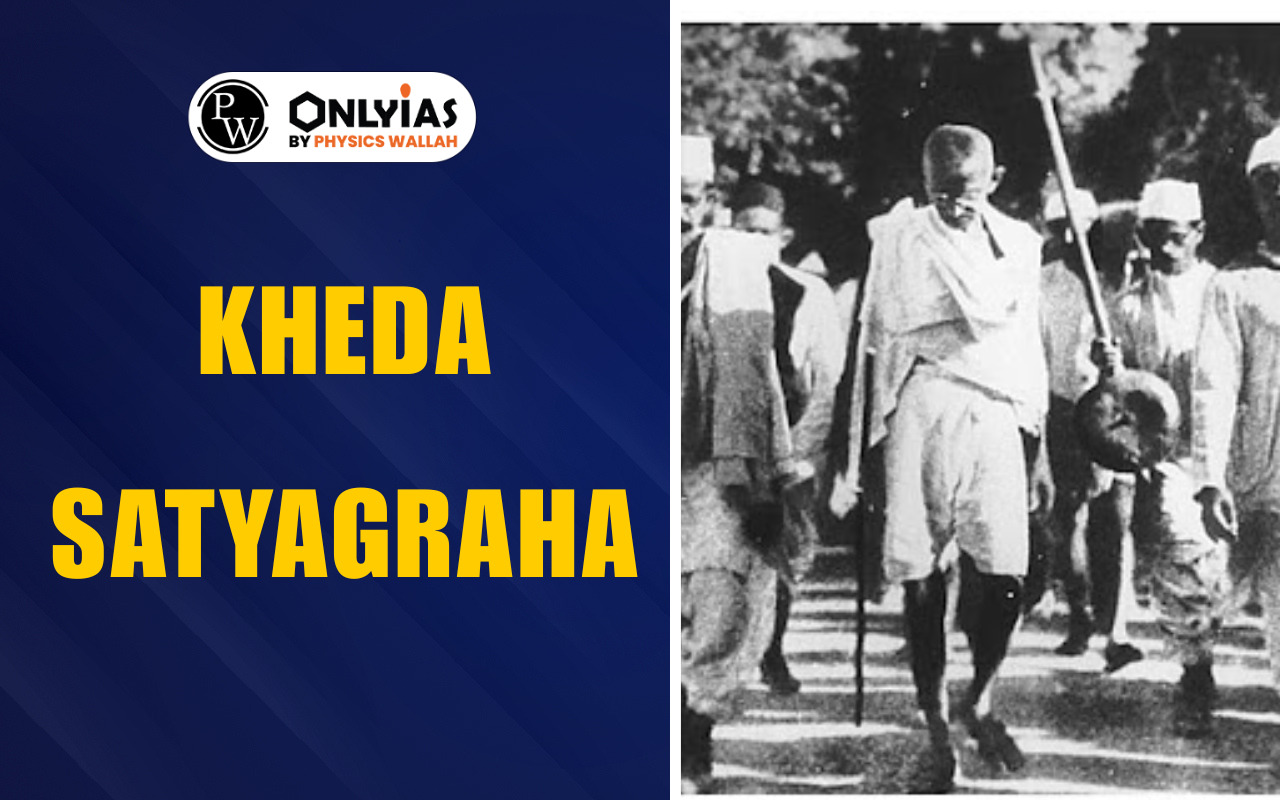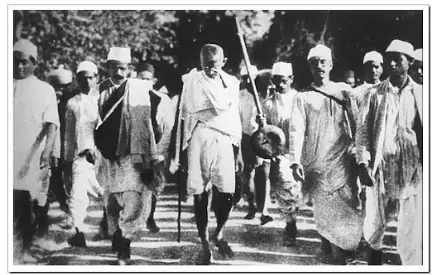Kheda Satyagraha of 1918 was a farmers’ protest in Gujarat against high taxes during crop failure and disease. Led by Mahatma Gandhi, Sardar Patel, and Mohanlal Pandya, it marked a major victory of nonviolence, securing tax relief, return of lands, and inspiring future freedom movements.

Kheda Satyagraha of 1918 was a major event in India’s fight for independence. It was a peaceful protest by farmers in the Kheda district of Gujarat. They refused to pay taxes because of crop failure and disease. This movement showed the power of unity and nonviolence. Leaders like Mahatma Gandhi and Sardar Vallabhbhai Patel guided the peasants. The success of this protest inspired later movements in India. Here, we have covered all the major details and aspects of Kheda Satyahraha.
Kheda Satyagraha started on March 11, 1918, in the Kheda district of Gujarat, which was then part of the Bombay province. This region was gripped with severe agricultural distress due to consecutive years of crop failure. The crop failure led to the outbreak of plague and cholera.

Despite these harsh situations, the British government insisted on the full payment of land revenue. Thereby disregarding the Revenue Code that mandated remission if the crop yield was less than one-fourth of the normal period. The peasants, led by local leaders and later supported by Mahatma Gandhi, initiated a nonviolent movement. During this movement, they refused to pay the taxes under these failing circumstances.
| Aspect | Details |
| Event | Kheda Satyagraha |
| Year | 1918 |
| Start Date | March 11, 1918 |
| End Date | June 5, 1918 |
| Location | Kheda district, Gujarat |
| Main Leaders | Mahatma Gandhi, Sardar Vallabhbhai Patel, Mohanlal Pandya |
| Cause | Crop failure, plague, high taxes |
| Outcome | Tax suspension, return of confiscated lands |
The movement was led by Mahatma Gandhi, who had previously led the Champaran Satyagraha in Bihar. In Gujarat, he was joined by prominent local leaders such as Sardar Vallabhbhai Patel, Indulal Yagnik, Shankarlal Banker, Narhari Parikh, Mahadev Desai, Ravi Shankar Vyas, and Mohanlal Pandya. Mohanlal Pandya had initially mobilized the peasants, and Gandhi’s involvement lent the movement national significance.
Gandhi’s Early Movements In India
Below are the major contributions made by the leaders in the Kheda Satyagraha. Refer to the table to know about the contributions:
| Contributions Made by Leaders | |
| Leader | Contribution |
| Mahatma Gandhi | Introduced nonviolence, unified farmers, negotiated with British, maintained moral authority, brought national focus |
| Sardar Vallabhbhai Patel | Organized and motivated peasants, ensured discipline and unity |
| Mohanlal Pandya | Mobilized local villagers, spread awareness about grievances |
| Indulal Yagnik | Supported organization and coordination |
| Shankarlal Banker | Assisted in leadership and planning |
| Narhari Parikh | Provided guidance to peasants |
| Mahadev Desai | Documented and supported movement activities |
| Ravi Shankar Vyas | Helped in spreading awareness among villagers |
The main reason for the Kheda Satyagraha was the immense suffering of farmers. They faced crop failure, disease, and high taxes. This made it impossible for them to pay the revenue demanded by the British.
Peasant Struggles In Colonial India (1857–1947)
Kheda Satyagraha concluded successfully. Highlighting the effectiveness of nonviolent protest. Farmers achieved their demands, and the movement became an example for future civil resistance in India.
Kheda Satyagraha was significant because it showed the power of nonviolence and empowered peasants. This helped develop strong national leadership for India’s future freedom movements.
Ready to boost your UPSC 2026 preparation? Join PW’s UPSC online courses today!
It started on March 11, 1918, and ended on June 5, 1918.
Mahatma Gandhi, Sardar Vallabhbhai Patel, and Mohanlal Pandya led the movement.
Crop failures, disease, and high taxes were the main reasons.
Taxes were suspended, lands returned, and farmers’ rights were recognized.
It showed the power of nonviolence and inspired future freedom movements.
<div class="new-fform">
</div>
